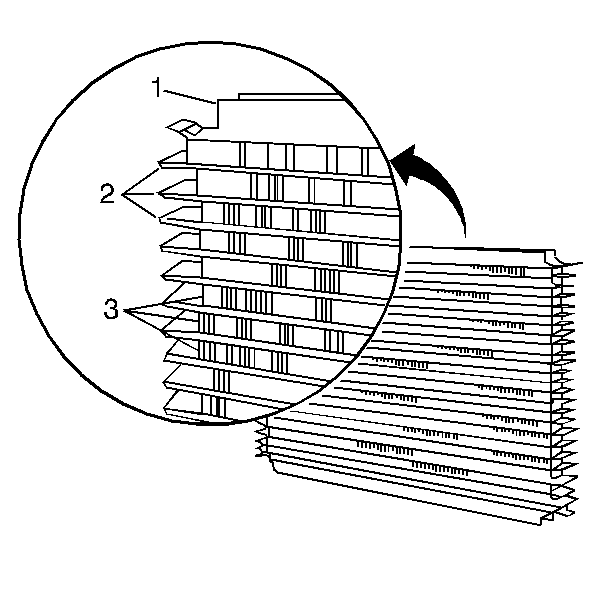Radiator
The engine uses an aluminum slant-back radiator design. This configuration allows continued low body profile while increasing the effective cooling surface area.
Cross-Flow Radiator Core and Outlet and Inlet Tanks

These models have an aluminum, cross-flow design core (1). The core uses a stack of horizontal tubes (2) that resist plugging. The cooling fins (3) surround these tubes. The top and bottom ribs strengthen the assembly. The saw-cut in each strengthening rib allows for expansion during temperature changes.
The inlet and the outlet tanks are molded from high-temperature, nylon reinforced plastic. A high-temperature rubber gasket seals the tank flange around the edge. The inlet and the outlet tanks are clamped to the right side and the left side of the core with clinch tabs. These tabs are part of the aluminum header at each end of the core. Radiators used with automatic transmissions have transmission oil coolers with inlet and outlet fittings for transmission fluid circulation.
You can identify an aluminum-plastic radiator by the black plastic side tanks and an aluminum radiator core.
Radiator Drain Cock
The radiator drain cock is on the bottom, left side of the radiator end tank. The drain cock includes the drain cock and the drain cock seal. Use the drain cock when you drain the coolant.
Transmission Oil Cooler
The transmission oil cooler is an integral part of the radiator. The transmission oil cooler is inside the right outlet tank.
The transmission oil cooler provides automatic transmission fluid cooling capacity. The transmission oil cooler also maintains a fairly constant fluid temperature under a variety of operating conditions.
